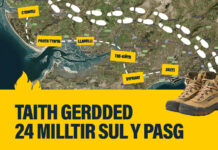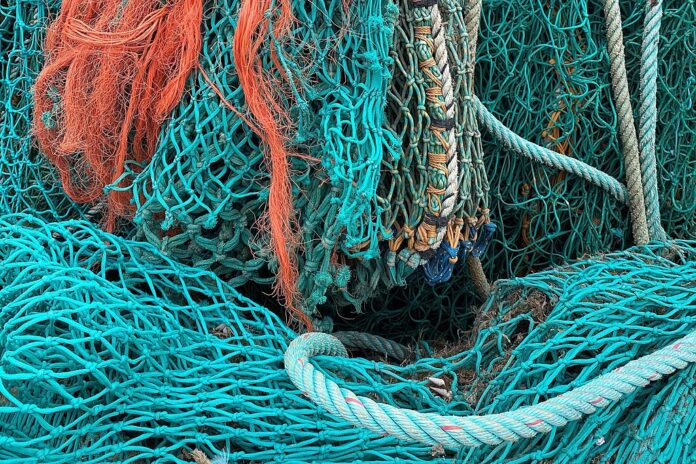Researchers quantify end-of-life fishing gear stocks to detect critical waste leakage points in the fishing gear management system in Taiwan
Abandoned, lost, or otherwise discarded fishing gear is a significant source of marine litter that harms marine and human life worldwide. Taiwan, which has a flourishing fishery industry, contributes significantly to marine litter pollution. However, information on commercial fishing gear stocks and flows in Taiwan remains patchy. Consequently, this research employs a material flow analysis of commercial fishing gears in Taiwan to improve fishery management and prevent leakages of fishery waste.
Plastic pollution is undeniably one of the most pressing issues affecting our oceans and marine wildlife. One of the most harmful types of marine plastic debris is abandoned, lost, or otherwise discarded fishing gear (ALDFG). About 640 thousand tons of fishing equipment are abandoned, lost, or dumped into the ocean each year. The impact of this plastic pollution can be felt across the board. ALDFG entraps and suffocates marine life. Moreover, there is chemical contamination with disruptive effects on marine species. As a result, human health is also impacted, with marine litter serving as a vehicle for diseases that contaminate the food chain.
The problem is more visible in Asian countries like Taiwan, which has one of the world’s largest fishing fleets. In Taiwan, an average of 12.7 m3 of marine litter accumulates per kilometer along the coastline, 70% of which is caused by fishing gear. Despite Taiwan’s high level of marine litter pollution, however, data on commercial fishing gear losses, stocks, and flows remains dispersed and poorly understood. It is, thus, imperative to quantify the end-of-life fishing gear stocks and flows and identify critical leakage points across the entire value chain in the fishery management system in Taiwan.
As a result, a team of researchers led by Dr. Falk Schneider from National Cheng Kung University (NCKU), Taiwan conducted a material flow analysis of several types of fishing gears. Dr. Schneider explains the purpose of the research in more detail: “Through a material flow analysis of commercial fishing gears in Taiwan, our goal is to enhance fishery management and prevent unwanted spillages of fishery waste. We hope that our research will assist Taiwanese policymakers in developing appropriate marine litter prevention policies.” The research included contributions from three NCKU students: Ching-Tuan Su, Hui-Ya Hsiao and Tien-An Su.
Against the backdrop of two earlier studies from Norway and South Korea, this research project addressed the following questions: (1) How much fishing gear stock is in the system? (2) How to stop fishing gears from turning into ocean waste? And (3) What policies are needed to effectively manage fishing gears?
First, a stakeholder map and the general flow structure of commercial fishing gear were established. The life cycle of fishing gear was divided into five stages: use, repair, storage, spillage to the ocean, and end-of-life. Following that, stakeholders from both government agencies and private companies were approached to gather quantitative data on current fishing gear stocks and flows. Next, the material flow analysis software STAN 2.7 was used to analyze the data and visualize the material flow model to identify pollution hotspots and spillage points.
The total input was estimated to be 8,846 tons/year, with the total output being 4,271 tons/year. About 2,722 tons of fishing equipment were estimated to be lost or dumped in the ocean annually after being used. While 1,172 tons of fishing gear required maintenance, 1,062 tons were stored in the harbor, and 3,529 tons reached the end-of-life stage. Waste fishing gear recycling, incineration and landfill amounted to 1,538 tons, 2,630 tons and 103 tons, respectively.
This groundbreaking research reveals the unflattering fact that tons of commercial fishing gear are dumped into the ocean every year, along with large amounts of waste fishing gear being left untreated in harbors for storage. Dr. Schneider recommends a few critical steps to develop a more sustainable fishing industry, “The Taiwanese government must collect data in a systematic manner to monitor and manage the fishing gear waste streams. Furthermore, a meeting should be convened between stakeholders from the fishery sector, government agencies, and non-governmental organizations to facilitate knowledge sharing toward more sustainable fisheries.”
Overall, this research could serve as a foundation for the dissemination of best practices for preventing marine litter in Asia and around the world.
***
Help keep news FREE for our readers
Supporting your local community newspaper/online news outlet is crucial now more than ever. If you believe in independent journalism, then consider making a valuable contribution by making a one-time or monthly donation. We operate in rural areas where providing unbiased news can be challenging. Read More About Supporting The West Wales Chronicle
























